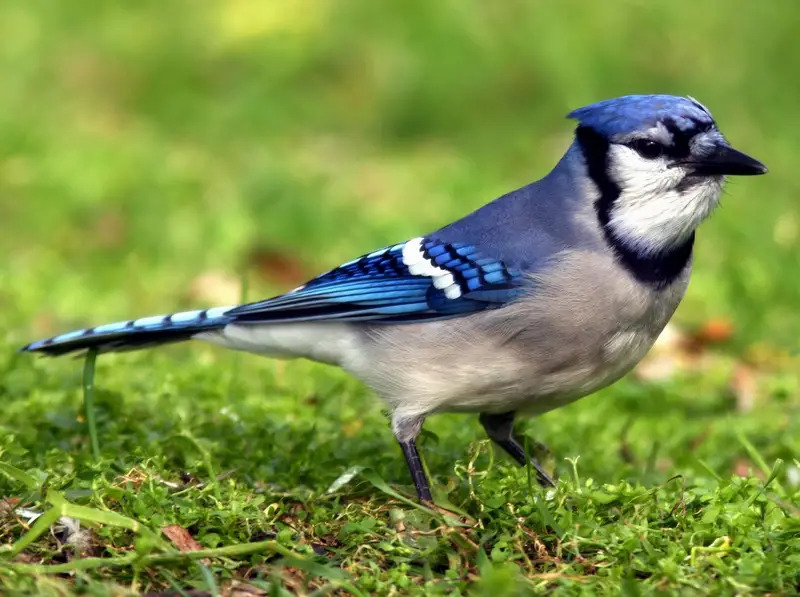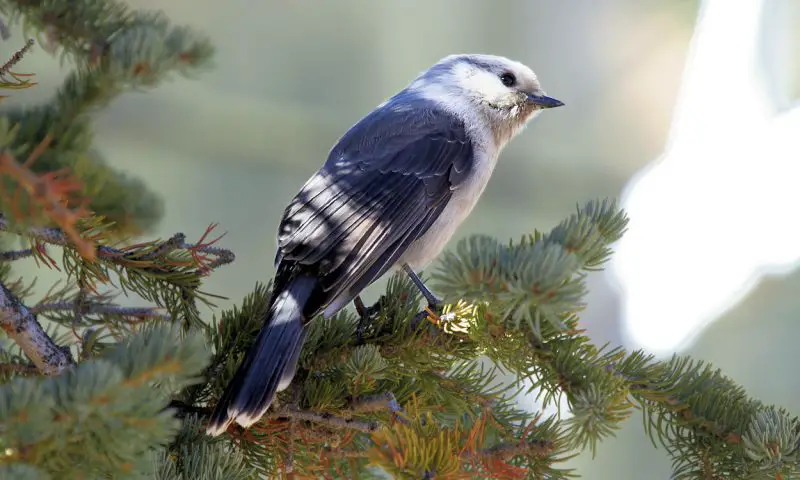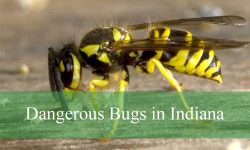Jays in Minnesota stand out among the state’s many birds thanks to their dazzling colors, clever nature, and vocal charm. Two species of jays are most commonly observed in the state: the Blue Jay and the Gray Jay. Both play unique roles in Minnesota’s ecosystems and provide birdwatchers with unforgettable sightings.
Jays are known not only for their striking appearances but also for their complex social behaviors. These birds are highly adaptable, able to thrive in forests, suburban areas, and parks, making them accessible to both amateur and experienced birdwatchers. Observing their interactions, feeding habits, and vocalizations provides valuable insight into avian life in northern regions.
Whether spotted darting through treetops or perched boldly at backyard feeders, jays are fascinating creatures. Their bold personalities, varied diets, and clever behaviors make them a favorite among Minnesota’s bird enthusiasts. Understanding how to identify each species is the first step in appreciating their role in the state’s natural landscape.
Different Types of Jays Found in Minnesota
Blue Jay (Cyanocitta cristata)

Identification and Physical Characteristics
The Blue Jay is one of North America’s most striking and easily recognizable birds. Its vibrant blue feathers contrast sharply with the white underparts and bold black markings encircling the neck and face. A prominent crest atop its head, which the bird can raise or lower depending on its mood, gives it a dynamic and expressive appearance. Adult Blue Jays measure approximately 9 to 12 inches in length, with a wingspan ranging from 13 to 17 inches. Their strong, slightly curved bills are perfectly adapted for cracking nuts, handling seeds, and occasionally capturing small prey. Intricate patterns of black, white, and blue on the wings and tail add to the bird’s unmistakable look.
Behavior and Diet
Blue Jays are highly intelligent and socially complex birds. Often seen in small family groups or loose flocks, they display a variety of interactions, from playful chasing to vocal disputes. They are famous for their loud and raucous calls, which range from the characteristic “jay” notes to remarkable mimicry of hawks, likely used to protect territory or food sources. Their diet is equally diverse, consisting of acorns, nuts, seeds, insects, eggs, and occasionally small vertebrates. Blue Jays are also avid food hoarders, caching acorns and other provisions for later use, which highlights their exceptional memory skills.
Reproduction and Nesting
Blue Jays generally breed between April and July. They build sturdy, cup-shaped nests in the branches of trees, typically 10 to 25 feet above the ground, using twigs, grass, and other plant materials. Females lay three to six eggs, which incubate for approximately 16 to 18 days. Both parents actively participate in feeding and protecting the chicks. Young Blue Jays fledge around 17 to 21 days after hatching, gradually learning to forage and navigate their environment.
Habitat and Distribution
Blue Jays are highly adaptable and occupy a wide range of habitats throughout Minnesota. They thrive in deciduous and mixed woodlands, but their bold and inquisitive nature allows them to frequent suburban neighborhoods, parks, and gardens with bird feeders. Their stable population and conspicuous behavior make them one of the most commonly observed and studied jay species in the region.
Fun Fact
Blue Jays are exceptional mimics, capable of imitating hawk calls to deceive other birds and protect their food caches. Their intelligence is on par with that of crows and ravens, earning them a reputation as one of North America’s most clever and resourceful songbirds.
Best Spots for Observation
In Minnesota, Blue Jays can be frequently observed in the Twin Cities metro area, Chippewa National Forest, and along the Mississippi River corridor. Backyard feeders stocked with peanuts and sunflower seeds are excellent places to attract these colorful birds.
Gray Jay (Perisoreus canadensis)

Identification and Physical Characteristics
Gray Jays, also known as Canada Jays, are medium-sized birds measuring 11 to 13 inches in length with a wingspan of 16 to 18 inches. Their soft gray plumage, lighter underparts, and pale face framed by a dark forehead give them a subtle yet distinctive appearance. Unlike the vibrant Blue Jay, Gray Jays possess a muted elegance that blends seamlessly with the northern forests they inhabit. Their rounded heads and stout bills contribute to their gentle, inquisitive look, making them easily recognizable to birdwatchers familiar with boreal landscapes.
Behavior and Diet
Gray Jays are fearless and highly curious, often approaching hikers and campers to investigate potential food sources. They are omnivorous, feeding on a wide variety of items such as insects, berries, small mammals, carrion, and occasionally human-provided snacks. Remarkably, Gray Jays practice “scatter-hoarding,” storing food in hidden caches throughout their territory to survive the long, harsh winters of northern Minnesota. This caching behavior demonstrates their impressive memory and resourcefulness.
Reproduction and Nesting
Gray Jays breed early in the year, often beginning in late February or March, which is unusually early for songbirds in cold climates. Nests are typically built high in conifers, 20 to 50 feet above the ground, and are composed of moss, twigs, and animal fur. Females usually lay two to four eggs, which incubate for approximately 16 days. Both parents are highly attentive, providing extensive care to the chicks to ensure their survival in challenging northern environments.
Habitat and Distribution
Gray Jays thrive in boreal and mixed forests, particularly in Minnesota’s northern regions such as the Superior National Forest and Voyageurs National Park. They are year-round residents and are well-adapted to frigid temperatures that would deter many other songbirds. Their ability to store food allows them to maintain energy throughout extended winter months, making them one of the most resilient avian species in the state.
Fun Fact
Gray Jays have earned the nickname “camp robbers” for their habit of stealing food from unsuspecting hikers and campers. Despite their mischievous tendencies, they are admired for their intelligence, boldness, and remarkable survival skills in extreme climates.
Best Spots for Observation
Birdwatchers can spot Gray Jays in remote northern forests such as the Boundary Waters Canoe Area Wilderness, Voyageurs National Park, and Chippewa National Forest. They are most active during early mornings and late afternoons, often near berry bushes, trail edges, or areas where human activity might provide a snack.
Conclusion
Minnesota offers bird enthusiasts a unique opportunity to observe both Blue Jays and Gray Jays, two species that showcase the diversity of avian life in the region. While Blue Jays are bold, vocal, and easily spotted even in suburban areas, Gray Jays provide a glimpse into the hardy, resourceful birds of the northern forests. Each species’ distinctive behaviors, diets, and habitats contribute to the rich ecological tapestry of the state.
By learning to identify these birds, understanding their habits, and knowing the best locations to observe them, birdwatchers can enjoy rewarding experiences throughout the year. Whether at backyard feeders or deep within Minnesota’s expansive forests, jays remain a captivating and integral part of the state’s wildlife.
FAQs About Jays in Minnesota
What types of jays are found in Minnesota?
Minnesota is home to two prominent jay species: the Blue Jay (Cyanocitta cristata), known for its vibrant blue plumage and vocal calls, and the Gray Jay (Perisoreus canadensis), also called Canada Jay, recognized for its soft gray coloring and fearless behavior in northern forests.
How can I identify a Blue Jay versus a Gray Jay?
Blue Jays are bright blue with white underparts and a prominent black neck band, featuring a movable crest on their head. Gray Jays have muted gray plumage with lighter underparts and a pale face with a dark forehead. They are generally larger and more subtle in coloration than Blue Jays.
Where can I see Blue Jays in Minnesota?
Blue Jays are highly adaptable and can be seen across the state in deciduous and mixed woodlands, suburban yards, city parks, and areas with bird feeders. They are active throughout the day and are often heard before they are seen.
Where are Gray Jays most commonly observed?
Gray Jays inhabit remote northern forests, including the Boundary Waters Canoe Area Wilderness, Voyageurs National Park, Chippewa National Forest, and Superior National Forest. They are especially active in early morning and late afternoon.
What do Blue Jays eat?
Blue Jays have a varied diet that includes acorns, nuts, seeds, insects, eggs, and occasionally small vertebrates. They are known for caching food to retrieve later, demonstrating advanced memory skills.
What do Gray Jays eat?
Gray Jays are omnivorous and consume insects, berries, small mammals, carrion, and human-provided snacks. They also store food in multiple caches to survive harsh winters.
When do Blue Jays and Gray Jays breed?
Blue Jays typically breed from April to July, building nests in trees 10 to 25 feet above ground. Gray Jays breed much earlier, often starting in late February or March, with nests located 20 to 50 feet high in conifers. Both species involve both parents in feeding and raising the young.
Are Jays aggressive toward humans?
Blue Jays can be loud and territorial but are not aggressive toward humans. Gray Jays, on the other hand, are known for being bold and curious, sometimes taking food directly from campers, which has earned them the nickname “camp robbers.”
Why are Blue Jays considered intelligent birds?
Blue Jays demonstrate complex social behaviors, excellent memory for cached food, and the ability to mimic other species, including hawks, to protect themselves and their resources. Their intelligence is comparable to that of crows and ravens.
Why are Gray Jays well-adapted to northern climates?
Gray Jays’ ability to store and retrieve food allows them to survive extremely cold winters. Their early breeding season and resourceful feeding strategies make them uniquely adapted to Minnesota’s northern boreal forests.






